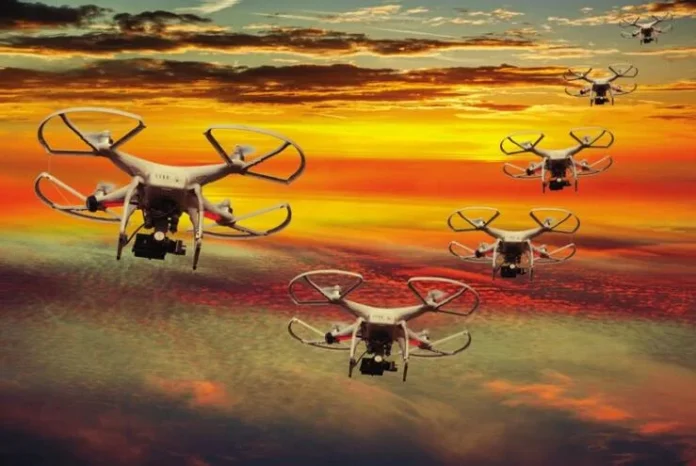The Indian Armed Forces has been undergoing rapid modernisation over the years. There has been a progressive upgradation of our weapon systems and platforms in keeping with our threat perceptions. However, due to budgetary constraints and other factors we have not been able to achieve our desired end state. At the same time our main adversaries China and Pakistan have also kept on their modernisation drives and today pose a serious threat to our sovereignty by resorting to provocation at the borders and within our hinterland. We need to take a special note of the kind of technologies our adversaries are using especially China to counter the balance in the Indian Sub-Continent. It is therefore imperative that the required niche technologies be identified for absorption within our Defence Services with a need to establish the required parity.
As has said by Van Crevald (Technology and War), “The greatest victories that have been won in war do not depend upon a simple superiority of technology, but rather on a meshing of one side’s advantages with the other’s weakness so as to produce the greatest possible gap between the two.”
Today’s warfare has undergone a paradigm change. Recent examples have been the Azerbaijan-Armenia conflict and the Israeli-Palestinian skirmish. Both these episodes have demonstrated how technology can be used to deliver outcomes within days which were earlier being achieved through conventional warfare spanning months of fighting.
India’s lack of focus on defence R&D and low overall researcher density have resulted in India being unable, thus far, to develop any breakthrough military technology or weapon system and remains amongst the largest importers of military equipment in the world. India spends 0.8% of the GDP on all R&D and has 156 researchers per million population. In comparison, the USA spends 2.8% of its GDP and has 4231 researchers per million population, China spends 2.0 % of GDP and has 1113 researchers per million population and Israel spends 4.8% of GDP and has 8255 researchers per million population.
Investments in defence technologies are capital intensive and provide returns only in the long-term. Such investments are viable only when exports, which provide economies of scale, are pursued whilst simultaneously fulfilling domestic demand. In recent times the defence reforms undertaken should be seen as a great opportunity to achieve greater indigenisation. Therefore, the challenges are immense.
Certain very pragmatic initiatives have recently been taken by the Government such as the iDEX (innovation for Defence Excellence) and the DISC (Defence India Start-up Challenge) which will strengthen the innovation eco-system. These programs aim to mobilise the capabilities available in the larger Indian start-up eco-system to develop products for the armed forces and harness available talent within the country.
The commercial high speed 5G broadband internet services from agencies like Star link may find use in defence especially for Surveillance and tracking of hypersonic missiles and extended ISR operations over long ranges. The extensive opportunities to use Artificial Intelligence and Data Analytics techniques in systems design and maintenance and support of systems needs to be explored by the local Industry. This calls for the Indian Armed Forces to prepare a perspective plan to embrace these technologies and place greater thrust on training its personnel to learn these technologies and also reskill service and civilian personnel with advance training and learning management systems.
Self-reliance in defence implies that the country needs to build a robust defence industrial complex that constantly tracks and keeps pace with the emerging technologies, so as to constantly provide the best solutions to the defence forces. In recent times, the rapid pace of developments in science and technology have ushered in a stream of new technologies that are constantly adopted by R&D organisations and industry to redesign and develop more complex systems and superior capabilities to meet new threats. The efforts of the private industry also have gathered momentum, in collaboration with DRDO and DPSUs to design and develop subsystems and technologies required for large and complex projects.
The emerging technologies like UAVs, Satellite Communication and Surveillance, long-range precision-guided ammunition, optical and IR sensors, high energy weapons, Cyber Security, Artificial Intelligence and Data Analytics are going to define warfare tactics in the future.
The future ISR shall be driven by the Fourth Industrial Revolution (4IR) technologies that are smart and intelligent, use predictive-cognitive tools and algorithms, and drive autonomous, unmanned and remote-controlled platforms, robots and machines. Some of the frontline technologies like Artificial Intelligence (AI), Machine Learning (ML), Big Data, Cloud Computing, Augmented Reality (AR), Quantum Computing, Cognitive Computing (CC) and Internet of Things (IoT) are gathering momentum and finding use in supporting ISR operations.

Some of the commercial technologies like Space X are already in the process of establishing space-based 5G communications and satellite networks to provide very high bandwidth communications around the Globe. There is no doubt that these commercial technologies will find applications in defence networks especially for tracking hypersonic missiles with optical and IR sensors on the Satellite networks. Most of the data could be processed in real time and communicated between the satellite chain and finally passed to the forces on land and sea.
There is a lot of discussion and action on artificial intelligence and other disruptive technologies and how they will impact warfare. The Chinese White Paper on defence at the very outset mentions that the application of cutting-edge technologies such as artificial intelligence (AI), quantum information, big data, cloud computing and the Internet of Things is gathering pace in the military field.
India with its talent pool and potential must get into the act otherwise we might be fighting a battle in a pre-conceived manner when our adversaries are attacking us through different domain using the disruptive power of AI.
Additionally, AI will be a built-in partner for robotics, Net centricity, AR, big data analysis, sensors and so on. As days pass, AI will expand its footprint in defence matters. In any case, all autonomous weapon systems will have a great amount of AI built into them. AI based change detection is going to disrupt costly sensors. Use of AI sensibly in functions related to intelligence, logistics, maintenance, administration and human resources management will facilitate better operations.
As technology continues to grow by leaps and bounds there is an incessant need for adopting it to innovate and develop new systems with greater potential in the future. Technology is impacting the platforms as well as system design in numerous ways. The unprecedented pace of evolution in technology needs to be harnessed with upgrades of existing systems and the development of new highly capable systems. The unmanned platforms for surface and the underwater domain will play a significant role in the next decade and such systems need to be developed for the extended role with manned platforms.
This calls for the Armed Forces to prepare an overall perspective plan to embrace these technologies and place greater thrust on training its personnel to learn these technologies and also reskill service and civilian personnel with advance training and learning management systems. Let’s build on this great opportunity and convert it into our strength. I am reminded of a famous quote, “Nothing is more expensive than a missed Opportunity”.
The writer is a former MGAOC Central Command. He has served in various important assignments in the Indian Army in Jammu and Kashmir and the North-East. He covers defence issues on various national TV channels. His recent book, “Breaking the Chinese Myth”, has been a best-seller on Amazon. Views expressed are personal and do not necessarily reflect the views of Raksha Anirveda









